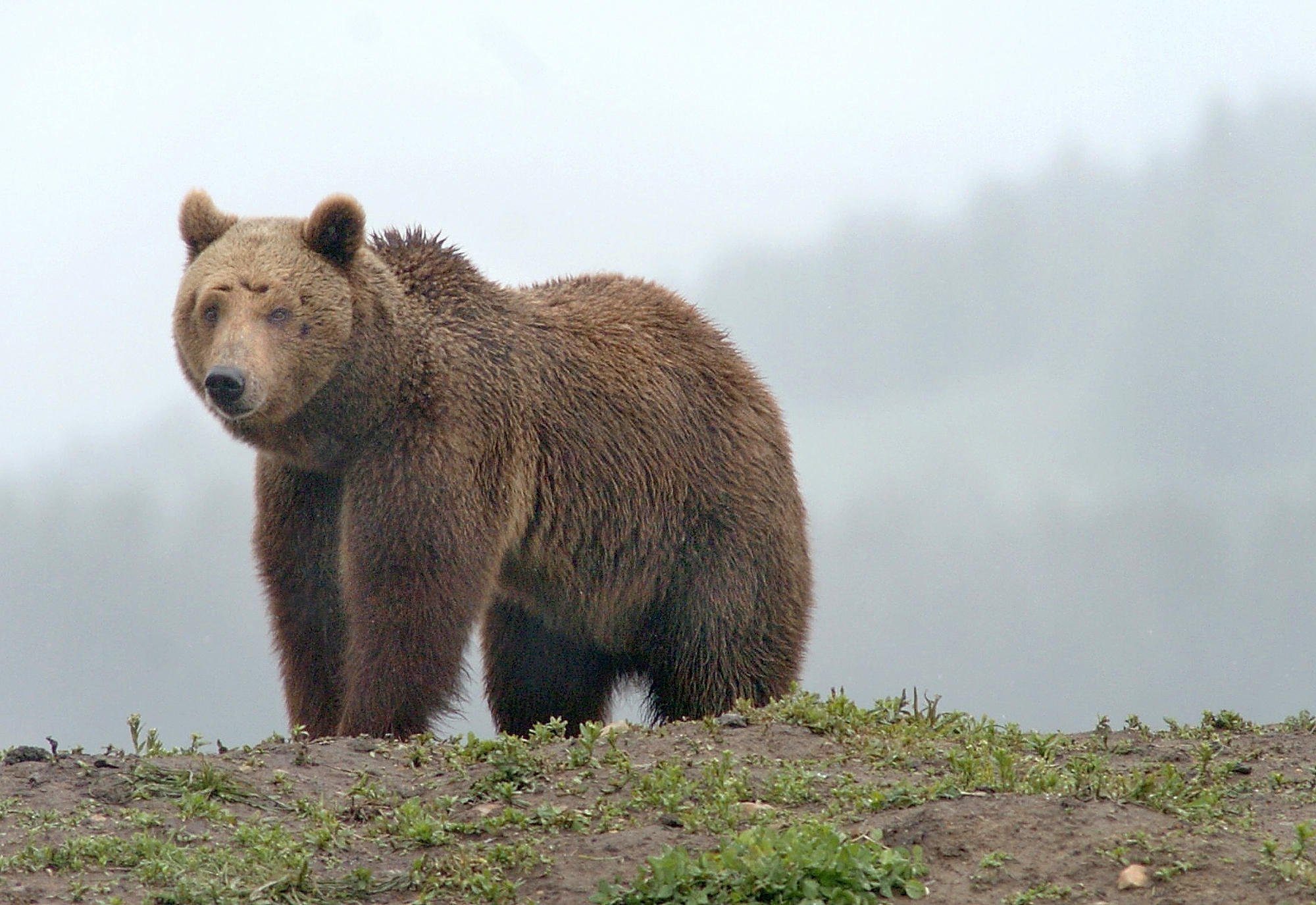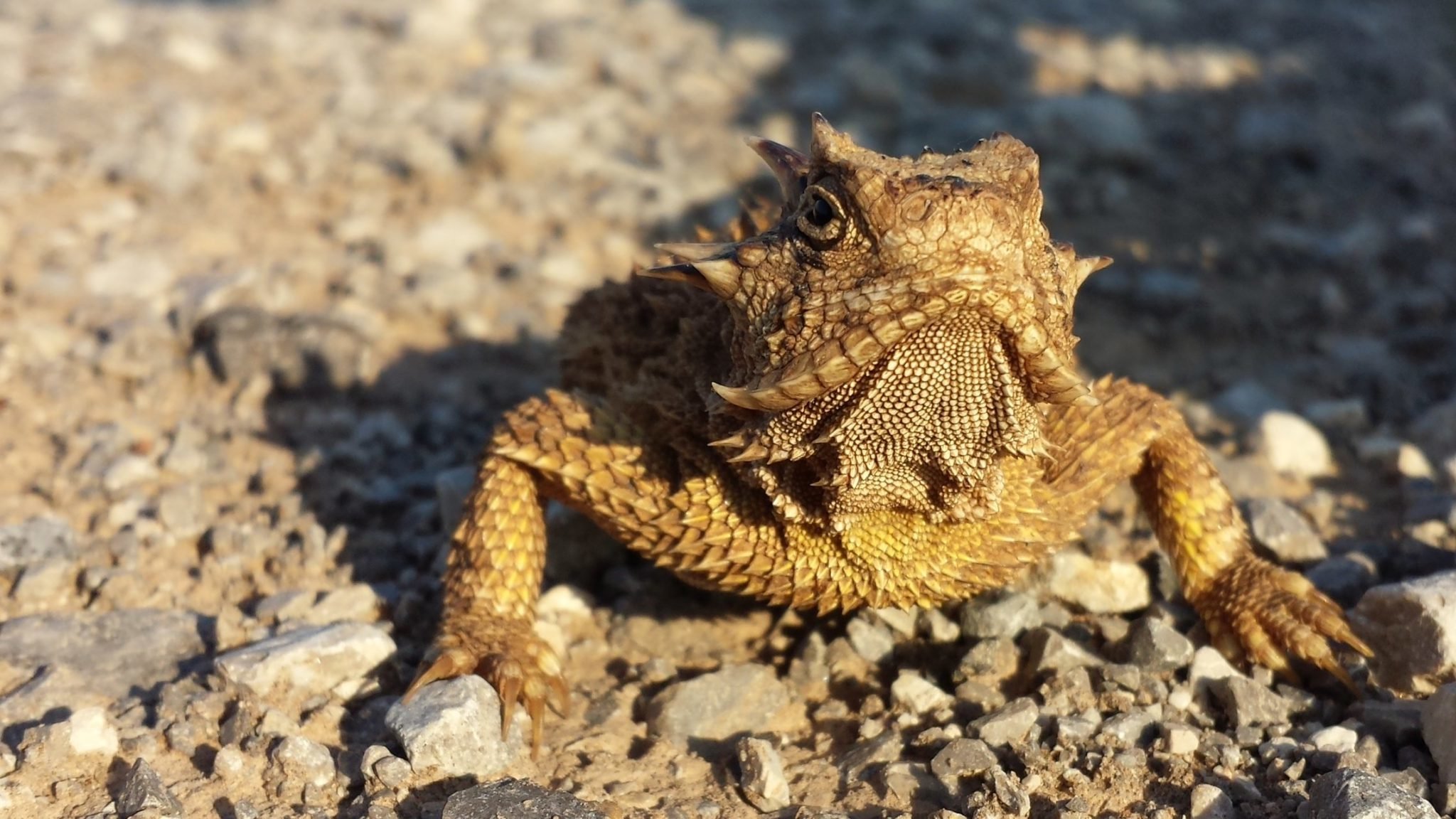
The Lone Star State Teems with Snakes, Lizards and Toads in ‘Herping Texas’
Michael Smith and Clint King's entertaining and rambling book recounts years of cold-blooded adventuring.
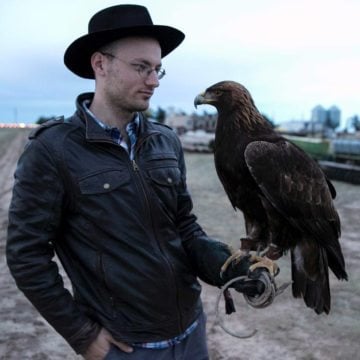
Above: The Texas horned lizard, or "horny toad."
When I was a kid, I spent a lot of time hunting for critters. The Dallas suburbs are a resolutely tamed landscape, with little in the way of big wildlife. But if I kept a close eye out, I could catch a scurry of movement, a flash of color, a sparkle of golden eyes staring down from a tree trunk. I studied neighboring houses with a burglar’s keenness, looking for the best spots to catch lizards basking on the walls. The neighborhood teemed with them: fat little geckos, sly anoles and wary fence lizards. There were earth snakes no bigger than a shoelace and garter snakes that nosed around the manicured lawns; pugnacious water snakes lurked in the creeks. Bigger beasts — bullsnakes and rat snakes — made rarer appearances along the railroad trestles. I loved all of them, instantly and deeply. Reptiles were embodiments of color and speed, living secret lives alongside us.
Those who professionally study reptiles and amphibians are called herpetologists; those who are wildly enthusiastic about spotting and occasionally capturing these animals are often called “herpers.” (Here I am contractually obligated to mention that while herping and herpetology do share a Greek root with the word “herpes,” this is a linguistic accident and is best ignored.) I am a shameless and devoted herper, forever obsessed by our cold-blooded cousins. Which makes me the ideal audience for Michael Smith and Clint King’s entertaining and rambling Herping Texas, a catalog of two herpers’ years of cold-blooded adventuring.
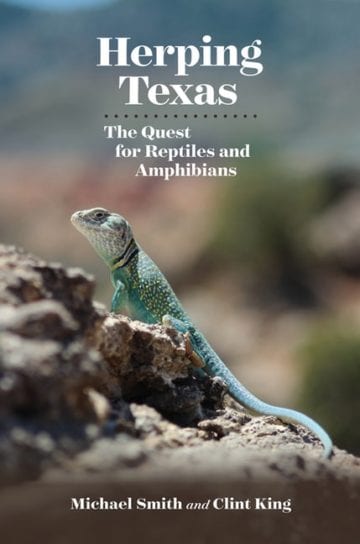
By Michael Smith and Clint King
Texas A&M University Press
$30; 336 pages
Herping Texas is a blend of travelogue, natural history and good old-fashioned hunting stories. The book has three main focuses: to document the reptiles and amphibians of the state, offer an introduction into the hobby and record the field adventures of its two authors. Over 12 chapters covering everything from the amphibian-rich woodlands of the Big Thicket to the snake-filled roadcuts of the Trans-Pecos, Smith and King give quick backgrounds on the ecological and historical significance of the region in question. The chapters are split into multiple adventures as recollected by one of the two men, each of which occasionally appears in the other’s stories; reading it gives a sensation akin to sitting on a porch and listening to two old fishing buddies complete each other’s sentences.
The expansiveness of the 300-page text fits the state nicely. There is simply no landscape in Texas that doesn’t have a reptile or 20 to offer. Sixty-one species of lizard and 68 species of snake reside around the state; American alligators patrol our eastern forests and the Gulf coast; turtles of all sorts jam up our creeks and ponds. We have our share of notorious residents — the Western diamondback rattlesnake is a major presence in the state’s folklore — and more secretive finds, like the Chihuahuan hook-nosed snake. Travel to the Panhandle and if you’re lucky, you’ll find an increasingly rare Texas horned lizard (better known as the “horny toad”); on the Texas-Mexico border are the majestic indigo snakes of Hidalgo County, with their blue-black scales and penetrating, intelligent eyes.
Smith and King do an excellent job keeping things moving, providing digressions on the natural history and behavior of the reptiles that cross their path, along with memories of other encounters with them. (Cottonmouths, for example, are much shyer than folklore would have you believe.) Some of their sightings are incredible: a big indigo snake in Hidalgo County messily dismembering a trapped rattlesnake, or a much sought-after alligator lizard sunning itself on the Barton Creek Greenbelt in Austin. But even the more prosaic sightings — a toad here, an anole there — are related with self-deprecating humor. There’s a childish glee in wandering around looking for reptiles and amphibians, and the authors allow that joy to shine through.
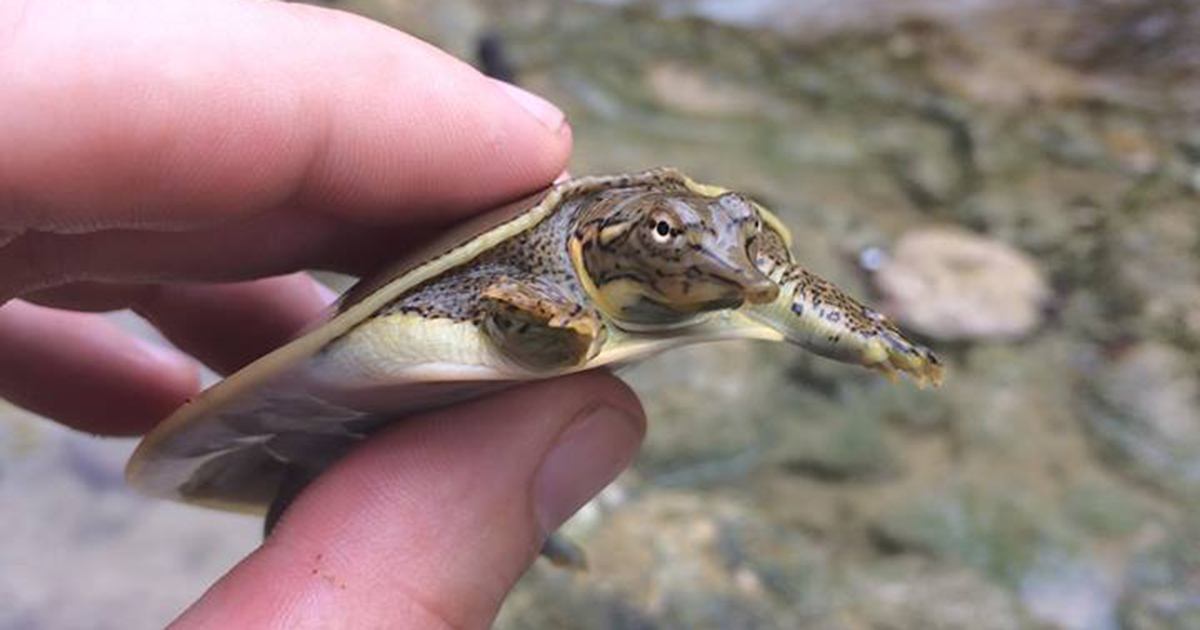
Yet there is an inevitable shadow hanging over the text; many of these species are increasingly rare, plagued by habitat loss, overdevelopment and highways. It’s a slow-motion tragedy that has been whittling state populations down for years. Herping, like birding or any other naturalist’s hobby, can sometimes feel like bearing witness to vanishing ecosystems. Smith wistfully recalls finding a Texas horned lizard while growing up in Fort Worth in the 1970s, which was notable even then — the species was already dwindling. With fire ants eradicating the lizard’s preferred prey and their presence in the eastern half of the state a distant memory, they’re now disappearing from much of the southwest as well.
But reptiles and amphibians can be remarkably resilient, and those who chase them have to be, too. Some of my fondest memories are of reptiles: a Texas spiny lizard perched on my shoulder, considering me with golden eyes; a hefty black-tailed rattlesnake tucked up inside a rock wall in the Big Bend, placid and shedding, while opalescent skinks nosed furtively on overhead logs. It is not the sort of passion that is easily explained. A birder appreciates the flash of color and song in the air, but never makes contact with the bird; an elk or bear is wilderness personified, to be seen from far off. Reptiles and amphibians are different. They offer a thrill of pursuit, or a puzzle for the eyes, or sometimes, just the simple joy of seeing yourself through their cool, slightly alien gaze. To touch a world that exists alongside you, but is far older, and forever slipping away.



